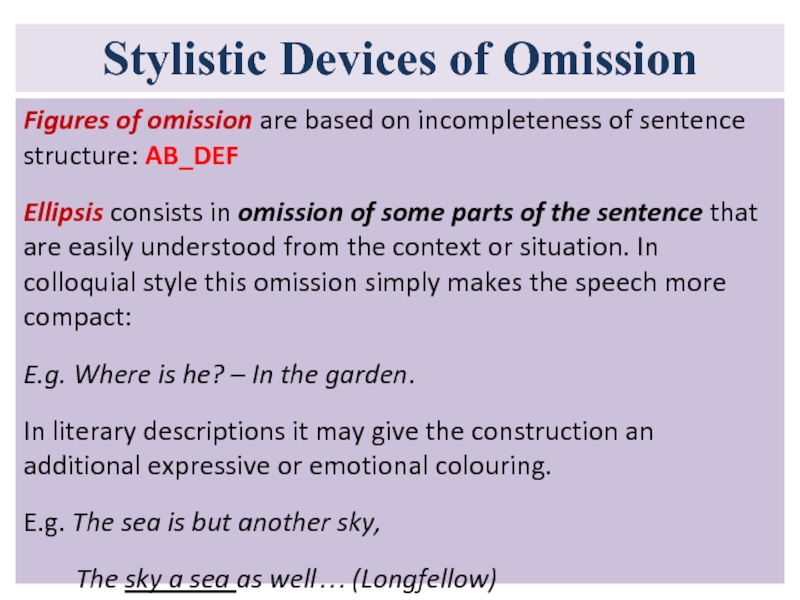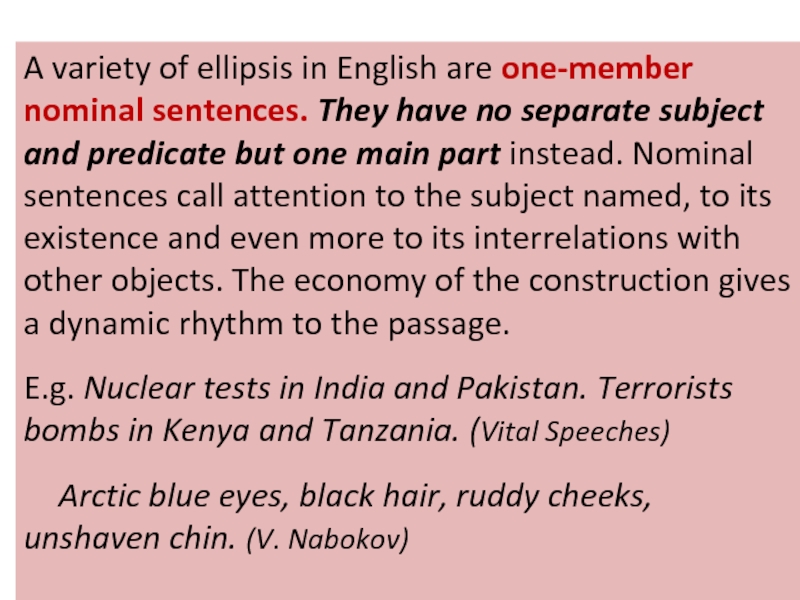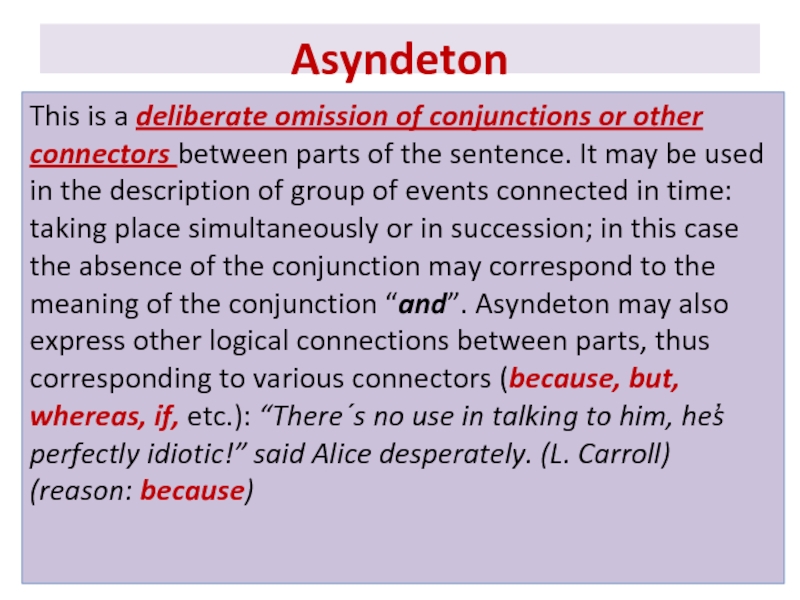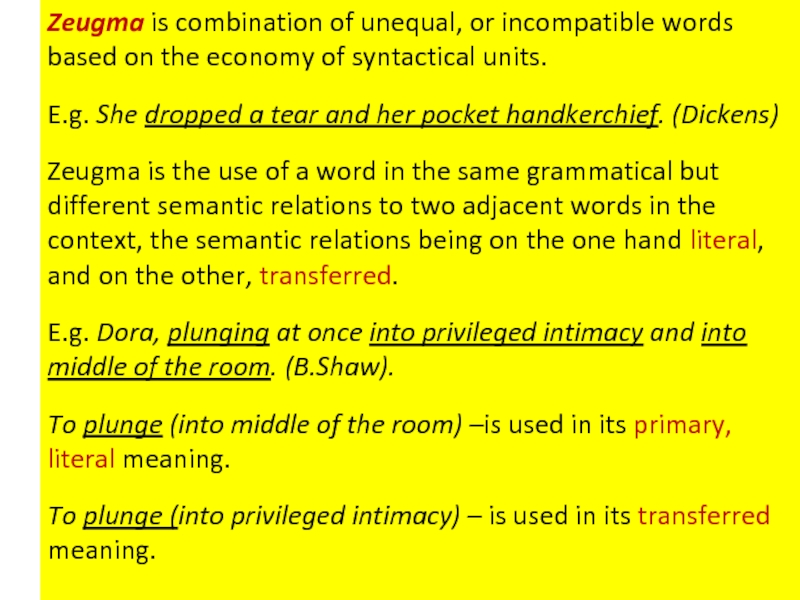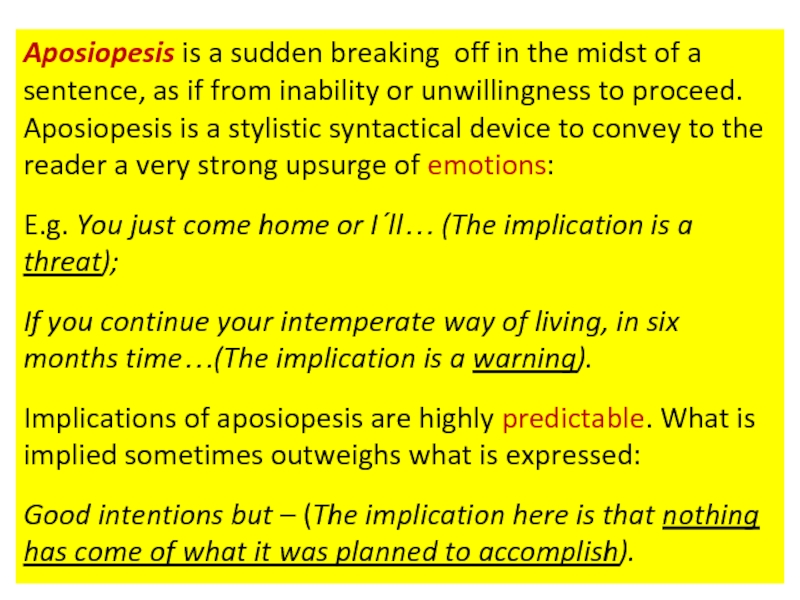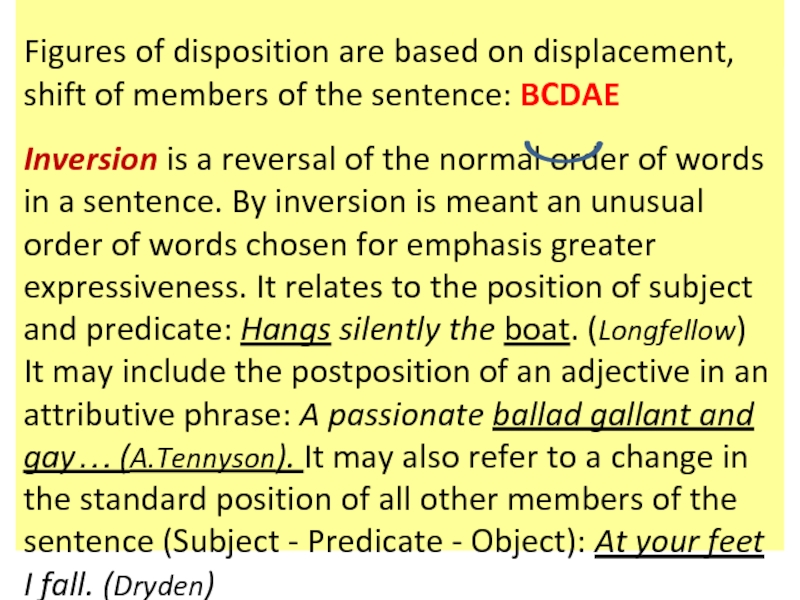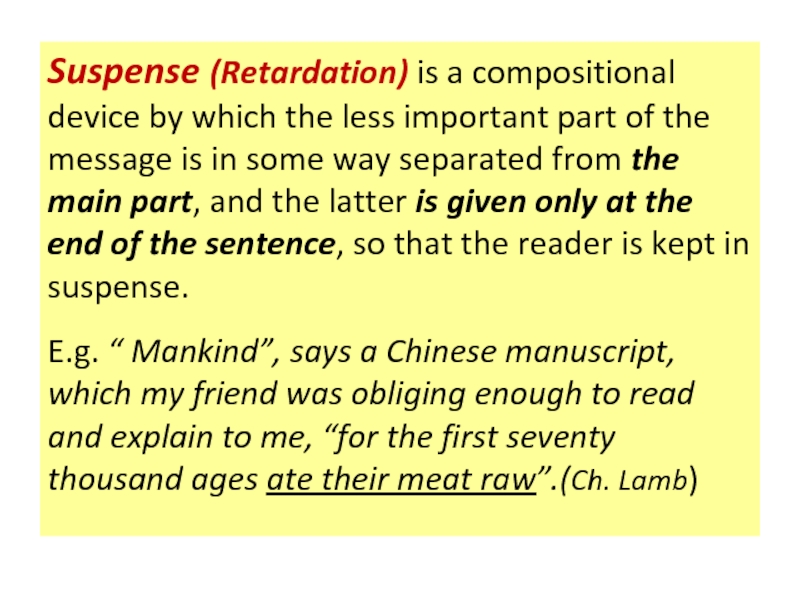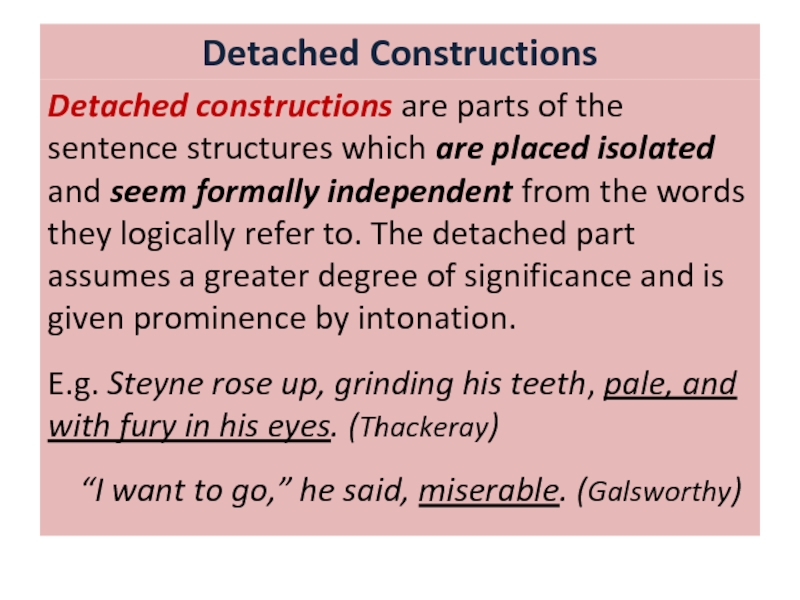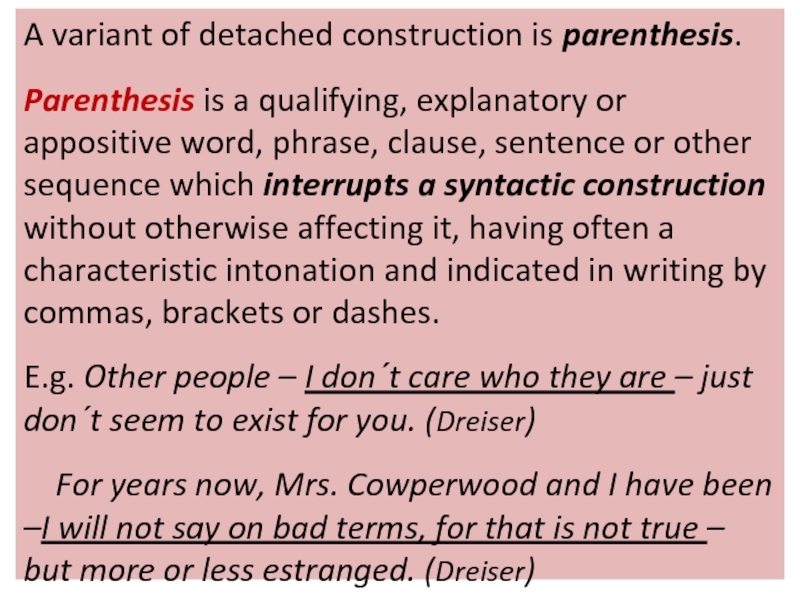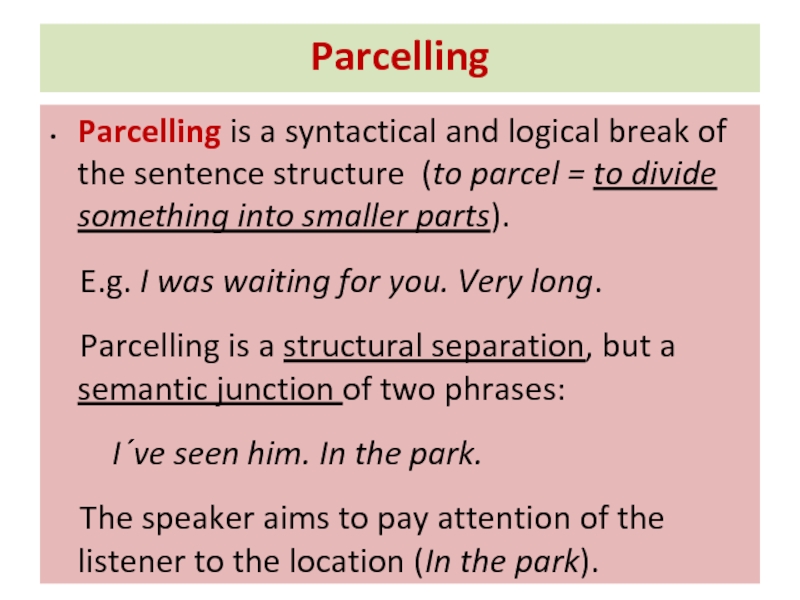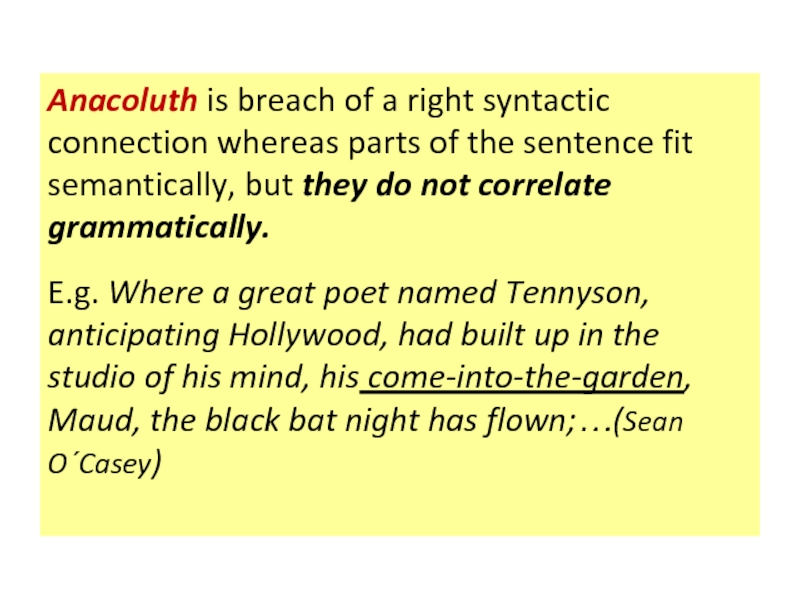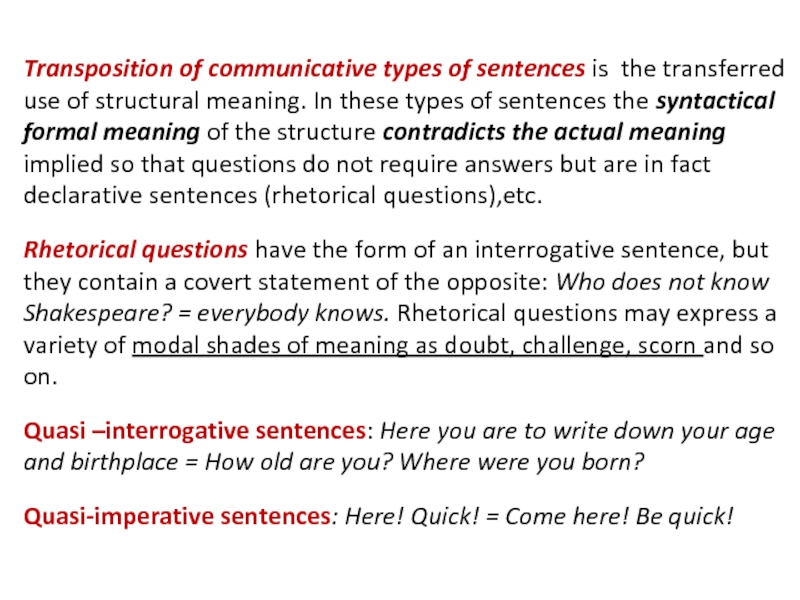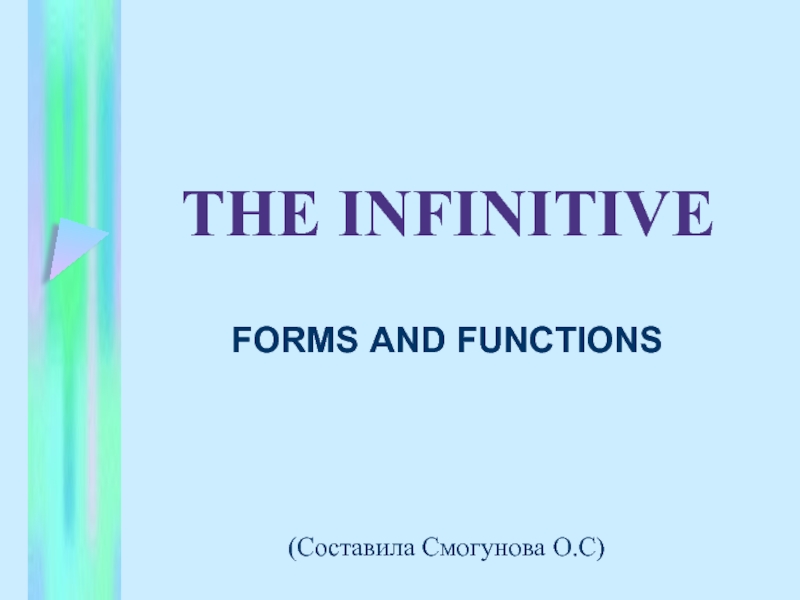sentence structure: AB_DEF
Ellipsis consists in omission of some parts of the sentence that are easily understood from the context or situation. In colloquial style this omission simply makes the speech more compact:
E.g. Where is he? – In the garden.
In literary descriptions it may give the construction an additional expressive or emotional colouring.
E.g. The sea is but another sky,
The sky a sea as well… (Longfellow)
- Главная
- Разное
- Дизайн
- Бизнес и предпринимательство
- Аналитика
- Образование
- Развлечения
- Красота и здоровье
- Финансы
- Государство
- Путешествия
- Спорт
- Недвижимость
- Армия
- Графика
- Культурология
- Еда и кулинария
- Лингвистика
- Английский язык
- Астрономия
- Алгебра
- Биология
- География
- Детские презентации
- Информатика
- История
- Литература
- Маркетинг
- Математика
- Медицина
- Менеджмент
- Музыка
- МХК
- Немецкий язык
- ОБЖ
- Обществознание
- Окружающий мир
- Педагогика
- Русский язык
- Технология
- Физика
- Философия
- Химия
- Шаблоны, картинки для презентаций
- Экология
- Экономика
- Юриспруденция
Stylistic Devices of Omission презентация
Содержание
- 1. Stylistic Devices of Omission
- 2. A variety of ellipsis in English
- 3. Asyndeton This is a deliberate omission of
- 4. Zeugma is combination of unequal, or
- 5. Aposiopesis is a sudden breaking off
- 6. Stylistic Devices of Disposition Figures
- 7. Suspense (Retardation) is a compositional device
- 8. Detached Constructions Detached constructions are parts of
- 9. A variant of detached construction is
- 10. Parcelling Parcelling is a syntactical and logical
- 11. Anacoluth is breach of a right
- 12. Transposition of communicative types of sentences
Слайд 2
A variety of ellipsis in English are one-member nominal sentences. They
have no separate subject and predicate but one main part instead. Nominal sentences call attention to the subject named, to its existence and even more to its interrelations with other objects. The economy of the construction gives a dynamic rhythm to the passage.
E.g. Nuclear tests in India and Pakistan. Terrorists bombs in Kenya and Tanzania. (Vital Speeches)
Arctic blue eyes, black hair, ruddy cheeks, unshaven chin. (V. Nabokov)
E.g. Nuclear tests in India and Pakistan. Terrorists bombs in Kenya and Tanzania. (Vital Speeches)
Arctic blue eyes, black hair, ruddy cheeks, unshaven chin. (V. Nabokov)
Слайд 3Asyndeton
This is a deliberate omission of conjunctions or other connectors between
parts of the sentence. It may be used in the description of group of events connected in time: taking place simultaneously or in succession; in this case the absence of the conjunction may correspond to the meaning of the conjunction “and”. Asyndeton may also express other logical connections between parts, thus corresponding to various connectors (because, but, whereas, if, etc.): “There΄s no use in talking to him, he̕s perfectly idiotic!” said Alice desperately. (L. Carroll) (reason: because)
Слайд 4
Zeugma is combination of unequal, or incompatible words based on the
economy of syntactical units.
E.g. She dropped a tear and her pocket handkerchief. (Dickens)
Zeugma is the use of a word in the same grammatical but different semantic relations to two adjacent words in the context, the semantic relations being on the one hand literal, and on the other, transferred.
E.g. Dora, plunging at once into privileged intimacy and into middle of the room. (B.Shaw).
To plunge (into middle of the room) –is used in its primary, literal meaning.
To plunge (into privileged intimacy) – is used in its transferred meaning.
E.g. She dropped a tear and her pocket handkerchief. (Dickens)
Zeugma is the use of a word in the same grammatical but different semantic relations to two adjacent words in the context, the semantic relations being on the one hand literal, and on the other, transferred.
E.g. Dora, plunging at once into privileged intimacy and into middle of the room. (B.Shaw).
To plunge (into middle of the room) –is used in its primary, literal meaning.
To plunge (into privileged intimacy) – is used in its transferred meaning.
Слайд 5
Aposiopesis is a sudden breaking off in the midst of a
sentence, as if from inability or unwillingness to proceed. Aposiopesis is a stylistic syntactical device to convey to the reader a very strong upsurge of emotions:
E.g. You just come home or I΄ll… (The implication is a threat);
If you continue your intemperate way of living, in six months time…(The implication is a warning).
Implications of aposiopesis are highly predictable. What is implied sometimes outweighs what is expressed:
Good intentions but – (The implication here is that nothing has come of what it was planned to accomplish).
E.g. You just come home or I΄ll… (The implication is a threat);
If you continue your intemperate way of living, in six months time…(The implication is a warning).
Implications of aposiopesis are highly predictable. What is implied sometimes outweighs what is expressed:
Good intentions but – (The implication here is that nothing has come of what it was planned to accomplish).
Слайд 6
Stylistic Devices of Disposition
Figures of disposition are based on displacement, shift
of members of the sentence: BCDAE
Inversion is a reversal of the normal order of words in a sentence. By inversion is meant an unusual order of words chosen for emphasis greater expressiveness. It relates to the position of subject and predicate: Hangs silently the boat. (Longfellow) It may include the postposition of an adjective in an attributive phrase: A passionate ballad gallant and gay… (A.Tennyson). It may also refer to a change in the standard position of all other members of the sentence (Subject - Predicate - Object): At your feet I fall. (Dryden)
Inversion is a reversal of the normal order of words in a sentence. By inversion is meant an unusual order of words chosen for emphasis greater expressiveness. It relates to the position of subject and predicate: Hangs silently the boat. (Longfellow) It may include the postposition of an adjective in an attributive phrase: A passionate ballad gallant and gay… (A.Tennyson). It may also refer to a change in the standard position of all other members of the sentence (Subject - Predicate - Object): At your feet I fall. (Dryden)
Слайд 7
Suspense (Retardation) is a compositional device by which the less important
part of the message is in some way separated from the main part, and the latter is given only at the end of the sentence, so that the reader is kept in suspense.
E.g. “ Mankind”, says a Chinese manuscript, which my friend was obliging enough to read and explain to me, “for the first seventy thousand ages ate their meat raw”.(Ch. Lamb)
E.g. “ Mankind”, says a Chinese manuscript, which my friend was obliging enough to read and explain to me, “for the first seventy thousand ages ate their meat raw”.(Ch. Lamb)
Слайд 8Detached Constructions
Detached constructions are parts of the sentence structures which are
placed isolated and seem formally independent from the words they logically refer to. The detached part assumes a greater degree of significance and is given prominence by intonation.
E.g. Steyne rose up, grinding his teeth, pale, and with fury in his eyes. (Thackeray)
“I want to go,” he said, miserable. (Galsworthy)
E.g. Steyne rose up, grinding his teeth, pale, and with fury in his eyes. (Thackeray)
“I want to go,” he said, miserable. (Galsworthy)
Слайд 9
A variant of detached construction is parenthesis.
Parenthesis is a qualifying, explanatory
or appositive word, phrase, clause, sentence or other sequence which interrupts a syntactic construction without otherwise affecting it, having often a characteristic intonation and indicated in writing by commas, brackets or dashes.
E.g. Other people – I don΄t care who they are – just don΄t seem to exist for you. (Dreiser)
For years now, Mrs. Cowperwood and I have been –I will not say on bad terms, for that is not true – but more or less estranged. (Dreiser)
E.g. Other people – I don΄t care who they are – just don΄t seem to exist for you. (Dreiser)
For years now, Mrs. Cowperwood and I have been –I will not say on bad terms, for that is not true – but more or less estranged. (Dreiser)
Слайд 10Parcelling
Parcelling is a syntactical and logical break of the sentence structure
(to parcel = to divide something into smaller parts).
E.g. I was waiting for you. Very long.
Parcelling is a structural separation, but a semantic junction of two phrases:
I΄ve seen him. In the park.
The speaker aims to pay attention of the listener to the location (In the park).
E.g. I was waiting for you. Very long.
Parcelling is a structural separation, but a semantic junction of two phrases:
I΄ve seen him. In the park.
The speaker aims to pay attention of the listener to the location (In the park).
Слайд 11
Anacoluth is breach of a right syntactic connection whereas parts of
the sentence fit semantically, but they do not correlate grammatically.
E.g. Where a great poet named Tennyson, anticipating Hollywood, had built up in the studio of his mind, his come-into-the-garden, Maud, the black bat night has flown;…(Sean O΄Casey)
E.g. Where a great poet named Tennyson, anticipating Hollywood, had built up in the studio of his mind, his come-into-the-garden, Maud, the black bat night has flown;…(Sean O΄Casey)
Слайд 12
Transposition of communicative types of sentences is the transferred use of
structural meaning. In these types of sentences the syntactical formal meaning of the structure contradicts the actual meaning implied so that questions do not require answers but are in fact declarative sentences (rhetorical questions),etc.
Rhetorical questions have the form of an interrogative sentence, but they contain a covert statement of the opposite: Who does not know Shakespeare? = everybody knows. Rhetorical questions may express a variety of modal shades of meaning as doubt, challenge, scorn and so on.
Quasi –interrogative sentences: Here you are to write down your age and birthplace = How old are you? Where were you born?
Quasi-imperative sentences: Here! Quick! = Come here! Be quick!
Rhetorical questions have the form of an interrogative sentence, but they contain a covert statement of the opposite: Who does not know Shakespeare? = everybody knows. Rhetorical questions may express a variety of modal shades of meaning as doubt, challenge, scorn and so on.
Quasi –interrogative sentences: Here you are to write down your age and birthplace = How old are you? Where were you born?
Quasi-imperative sentences: Here! Quick! = Come here! Be quick!
